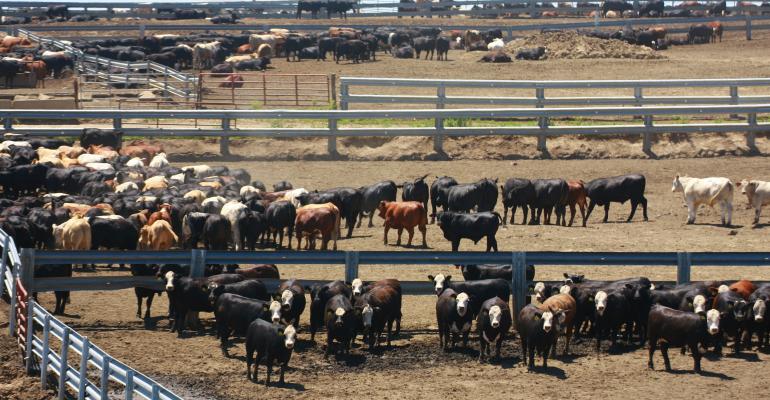
Agricultural News
OSU's Derrell Peel Talks Large Feedlot Inventories to Start 2020
Mon, 27 Jan 2020 09:58:59 CST

Mondays, Dr. Derrell Peel, Oklahoma State University Extension Livestock Marketing Specialist, offers his economic analysis of the beef cattle industry. This analysis is a part of the weekly series known as the "Cow Calf Corner" published electronically by Dr. Peel and Glenn Selk. Today, Dr. Peel talks about large feedlot inventories to start 2020.
The latest monthly cattle on feed report showed the January 1 inventory in feedlots (over 1,000 head) at 11.958 million head, 102.3 percent of one year ago. This is the largest January on-feed total since 2008. Placements in December were up 3.5 percent year over year, the highest December level since 2011. December marketings were 5.3 percent higher year over year, the largest level since December 2010. December 2019 had one additional business day compared to a year earlier making daily average marketings for the month about equal to 2018. The January cattle on feed report was well anticipated with placements, marketings and on-feed totals all close to pre-report expectations. The report is not expected to provoke much market response.
December feedlot placements consisted of 5.3 percent more cattle over 700 pounds compared to one year ago and 1.7 percent more year over year for cattle under 700 pounds. In fact, in the last four months, total placements have increased 5.3 percent year over year with placements of cattle over 700 pounds up 7.8 percent year over year and cattle under 700 pounds up 2.5 percent over last year. These heavyweight placements represent much of the feedlot supply that will be marketed in the first quarter of 2020.
Among major feeding states, current feedlot inventories are shifted to the southern plains and mountain states with lower feedlot totals in the Midwest and northern plains. January feedlot inventories were up year over year in Texas (108 percent of last year); Colorado (108 percent); Kansas (104 percent); and Oklahoma (105 percent). Feedlot inventories are lowest in Nebraska (96 percent of last year); Iowa (97 percent) and South Dakota (100 percent).
With total cattle inventories at or just past a cyclical peak, feedlot inventories will likely peak in the next few months. However, average feedlot inventories are currently record large. After peaking last August then declining for two months, the twelve-month moving average of feedlot inventories moved higher the last three months and is currently at 11.639 million head, record large for the current data series back to 1996. The twelve-month moving average removes seasonality and allows month-to-month comparisons of annual average feedlot inventories.
The January Cattle on Feed report also contained quarterly numbers of steers and heifers on feed. The inventory of steers on feed was 7.373 million head, up 1.3 percent year over year and the highest January level since 2008. Steer inventories declined year over year each quarter in 2019 but picked back up in the latest report. The inventory of heifers on feed was 4.585 million head in this latest report, up 4.0 percent year over year and the largest January heifer inventory since 2001. Heifer feedlot inventories increased year over year starting in April 2016 and has been larger each of the last 16 quarters.
Cattle slaughter is expected to decrease in 2020, including a slight year over year decline in steer and heifer slaughter and lower cow slaughter. However, large current feedlot inventories confirm that slaughter will be higher early in the year before decreasing in the second half of 2020. Total annual beef production is expected to be slightly higher year over year as heavier carcass weights offset lower slaughter. Beef production in the first half of the year will be higher on increased slaughter and larger carcass weights before lower slaughter pulls beef production down late in the year.
WebReadyTM Powered by WireReady® NSI
Top Agricultural News
More Headlines...





